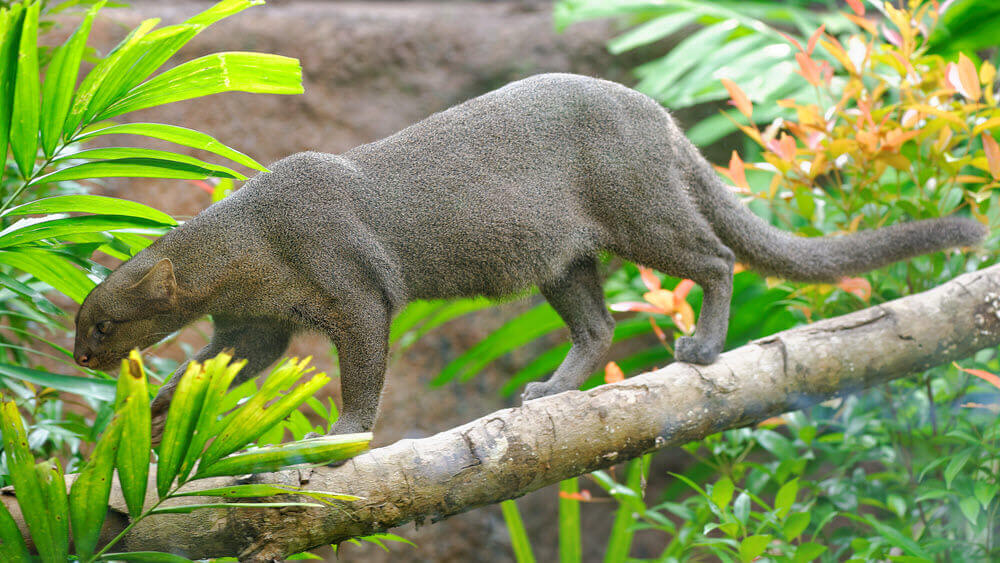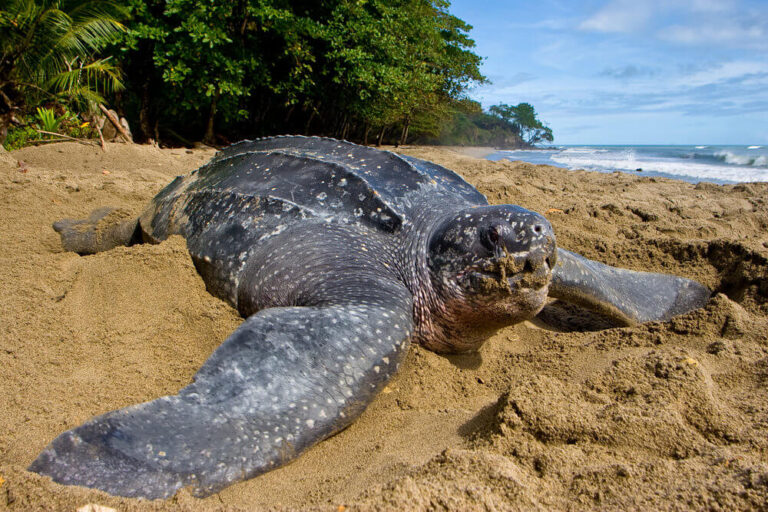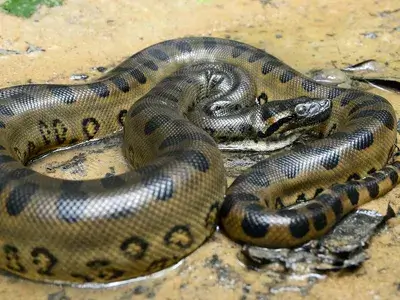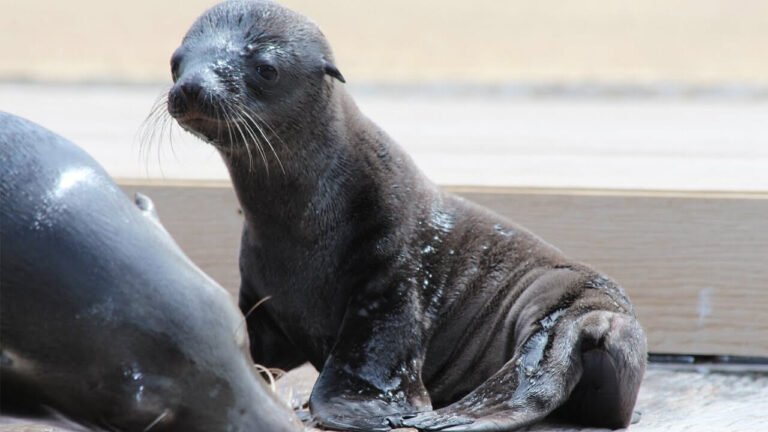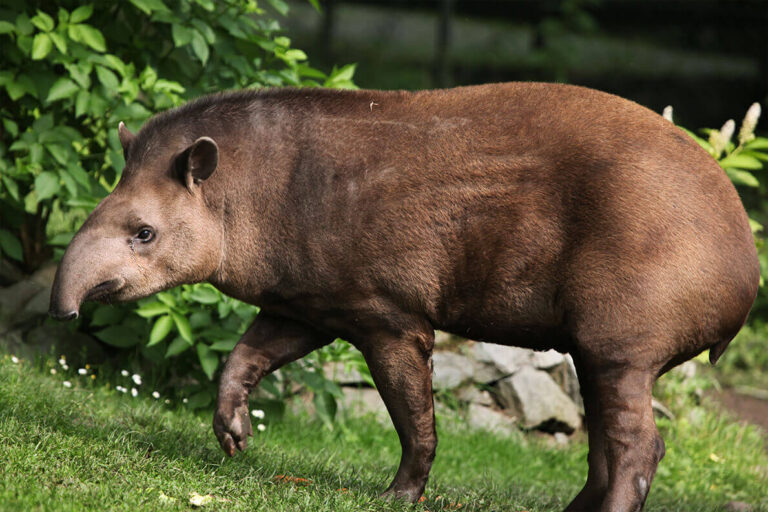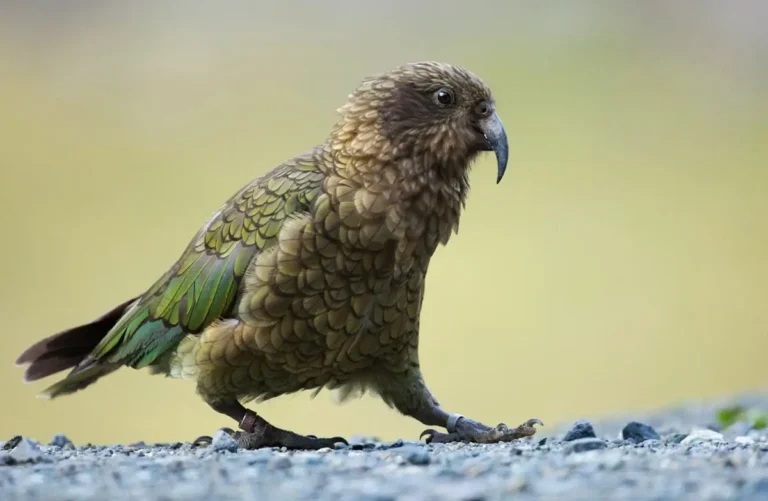Jaguarundi: The Elusive Wild Cat of the Americas
The Jaguarundi (Herpailurus yagouaroundi) is a fascinating and elusive wild cat in the Americas. Its unique appearance and behaviors make it stand apart from other feline species in its family. This article explores its scientific classification, physical characteristics, habitat, behavior, diet, reproduction, predators, conservation status, and relationship with humans.
Contents
Scientific Classification
- Kingdom: Animalia
- Phylum: Chordata
- Class: Mammalia
- Order: Carnivora
- Family: Felidae
- Genus: Herpailurus
- Species: H. yagouaroundi
The Jaguarundi belongs to the family Felidae, which includes well-known cats such as lions, tigers, and house cats. However, despite its name, it is unique enough to warrant its genus, Herpailurus, and it is more closely related to the puma than the jaguar.
Physical Characteristics

The Jaguarundi has a slender, elongated body that gives it an otter-like appearance, earning it the nickname “otter cat.” Here are some notable physical traits:
- Size: 50-77 cm (20-30 inches) in body length, with an additional 33-60 cm (13-24 inches) tail length.
- Weight: Typically between 3.5 and 9 kg (8-20 lbs).
- Fur Color: Varies from reddish-brown to dark grey, often dictated by habitat. Some individuals have black coats, particularly in densely forested regions.
- Legs: Short, contributing to its elongated appearance.
- Face: Rounded with small, rounded ears and relatively large eyes.
Jaguarundis have a distinct, sleek coat, which lacks the spots and patterns seen in many other wild cats, helping them blend into their environment, especially in grasslands and scrub habitats.
Habitat and Distribution
Jaguarundis are primarily found in Central and South America, ranging from northern Mexico to Argentina. They prefer habitats such as:
- Tropical and subtropical forests
- Grasslands
- Scrublands
- Swamps
- Savannas
They are highly adaptable to various environments but tend to avoid dense rainforests, which is more common territory for their relatives, the ocelots and jaguars. Jaguarundis thrive at elevations ranging from sea level to up to 3,200 meters.
Behavior and Social Structure

The Jaguarundi is known for its solitary nature and is active both day and night, a behavior known as being cathemeral. Some key behavioral traits include:
- Hunting Style: They are exceptional climbers and swimmers, though they primarily hunt on the ground. Their hunting behavior often includes stalking small prey in thick undergrowth.
- Territoriality: They mark their territory with scent and vocalizations, though they are less aggressive about defending it than other wild cats.
- Vocal Communication: Jaguarundis produce various vocalizations, including purring, whistling, and even bird-like chirps to communicate.
Diet
Jaguarundis are predatory and opportunistic hunters. Their diet consists primarily of small prey such as:
- Rodents: Mice, rats, and squirrels
- Birds: Ground-nesting species
- Reptiles: Including lizards and snakes
- Amphibians: Frogs and tiny turtles
- Insects: Beetles and grasshoppers, particularly during food shortages.
They are also known to eat fruits and berries, especially when prey is scarce, showcasing a certain dietary flexibility uncommon in more giant cats.
Reproduction and Life Cycle
The reproductive behavior of the Jaguarundi is not extensively studied due to its elusive nature, but what is known includes:
- Breeding Season: Occurs throughout the year, though it may peak during specific seasons depending on the region.
- Gestation Period: Approximately 70-75 days.
- Litter Size: 1-4 kittens, typically born in a well-concealed den.
- Kittens Are born with spotted coats, which fade as they mature.
Young jaguarundis stay with their mother for up to 10 months before becoming independent. Sexual maturity is reached at about two years of age.
Predators and Threats
As medium-sized carnivores, jaguarundis are not at the top of the food chain. Some of their natural predators include:
- Jaguars
- Pumas
- Large birds of prey
- Caimans in certain areas
However, the greatest threat to jaguarundis comes from humans. Deforestation, habitat fragmentation, and hunting pose significant risks to their survival.
Conservation Status
The Jaguarundi is currently listed as Least Concern on the IUCN Red List, though their populations are declining in several regions. Factors contributing to their conservation status include:
- Habitat Loss: Extensive deforestation for agriculture and urban development reduces their natural range.
- Hunting: Though not widely targeted, jaguarundis are sometimes killed in retaliation for preying on small livestock or poultry.
- Legal Protection: In some countries, jaguarundis are protected under national wildlife conservation laws, though enforcement varies.
Conservation efforts focus on preserving their habitat and promoting coexistence with human populations.
Evolutionary History
Jaguarundis belong to the Felinae subfamily, which diverged from other cats around 10-12 million years ago. Fossil evidence suggests that jaguarundis’ ancestors spread across North and South America, developing their unique characteristics over millions of years. They share a close evolutionary lineage with the puma, although their behavior and physical appearance differ significantly.
Relationship with Humans
Unlike some wild cats commonly feared or revered, the Jaguarundi has a relatively neutral relationship with humans. However, in some rural areas, they are viewed as pests due to their occasional predation on poultry. Additionally, due to their elusive nature, they are rarely seen, which has minimized direct conflict with people. Unlike many of their larger, more iconic relatives, Jaguarundis are not typically hunted for their fur or other body parts.
Interesting Facts About Jaguarundis
- Wide Range of Vocalizations: Jaguarundis communicates with an impressive variety of sounds, which is more diverse than most wild cats.
- Daytime Activity: Unlike many cats, jaguarundis are frequently active during the day, making them more diurnal than their nocturnal relatives.
- Social for a Wild Cat: While largely solitary, jaguarundis have been observed hunting in pairs or small groups, a behavior uncommon in other wild cats.
- Adaptable Hunters: They are skilled climbers and swimmers, which allows them to catch prey that other cats might not target.
- Versatile Diet: Though carnivorous, they are known to consume fruits and plants when necessary, making them less reliant on animal prey than larger carnivores.
Conclusion
The Jaguarundi is an adaptable and versatile wild cat that has survived in various environments across the Americas. While not currently endangered, it faces habitat loss and human encroachment challenges. Conservation efforts will be critical in ensuring the Jaguarundi continues to thrive in its native habitats. Understanding this elusive creature’s behavior, diet, and habitat is essential to preserving its future and maintaining the delicate balance of the ecosystems in which it plays a role.
- Golden Retriever Pros and Cons: What Every Pet Parent Should Know - 15 September 2025
- Cane Corso Dog Breed: Health, Care, and Lifespan - 14 September 2025
- Catahoula Leopard Dogs: Description, Temperament, Lifespan, & Facts - 21 July 2025

